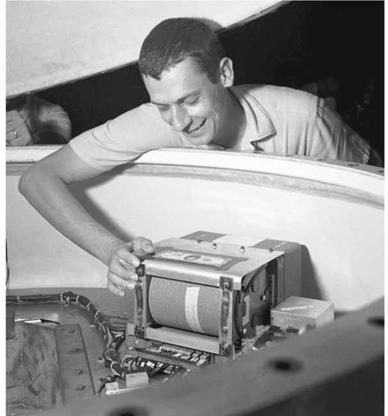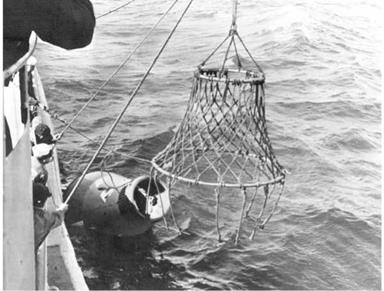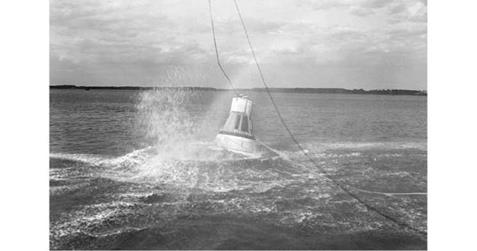ASTRONAUT WATER SURVIVAL TRAINING
To assist in astronaut water survival and egress training, McDonnell supplied NASA with a full-size boilerplate Mercury capsule designated Unit SC-5. The first phase of this crucial training program took place in February 1960 at the Langley Flight Research Center’s hydrodynamic basin – an open tank of fresh water 2,200 feet long by just 8 feet wide and 5 feet deep. Each of the astronauts, dressed in regular flight suits, had to make several egresses through the top end of the floating capsule in both still water and simulated waves.
|
|
While assembling a Little Joe craft a workman tapes a signed $20 bill to the inside of the capsule as a souvenir of the flight. (Photo: NASA/Langley Research Center)
|
|
Navy crewmen maneuver a huge net alongside the salvage ship USS Preserver (ARS-8) to retrieve the unmanned Little Joe 1-B capsule five miles off the coast of Wallops Island. (Photo: NASA)
![]()
|
During impact studies conducted in Virginia’s Back River, the astronauts practiced the dangerous maneuver of exiting a floating spacecraft after splashdown. (Photo: NASA) |
The second phase of this training began two months later in the Gulf of Mexico, offshore from the Pensacola Naval Air Station in Florida. Wearing astronaut-style flight pressure suits, the men now had to practice egress techniques which involved clambering out of their couches and making their way up through the top of the mockup spacecraft. They also had to practice egress methods from the open side hatch, all the while supported by Navy frogmen.
The third phase of this training commenced in August 1960 back at Langley. On this occasion the boilerplate SC-5 was fully submerged in the center’s hydrodynamic basin and each astronaut now had to egress the capsule six times – thrice wearing flight suits and thrice again wearing flight pressure suits.













